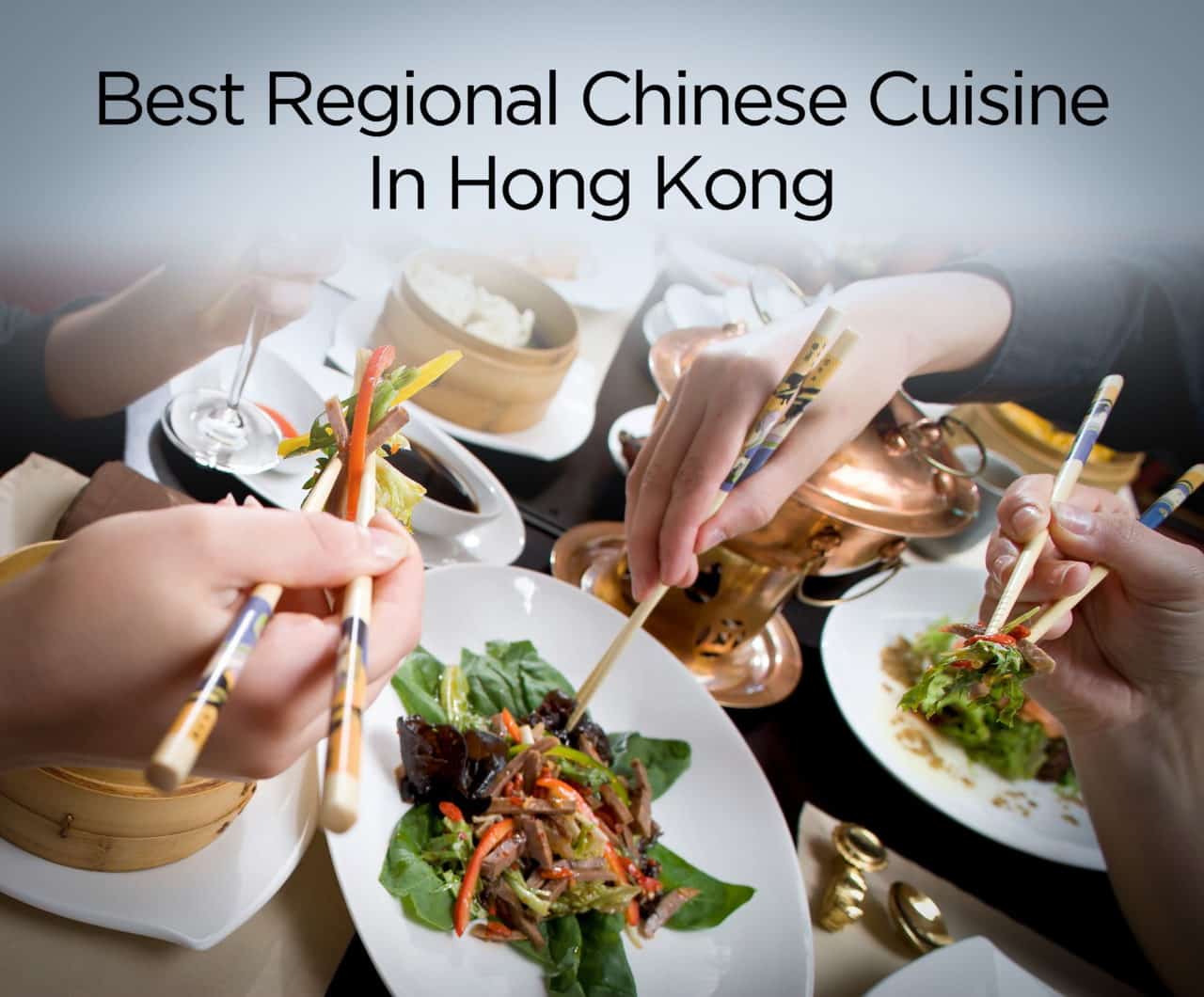Best Regional Chinese Cuisine In Hong Kong


Andrea Lo
Think Chinese food is all about dim sum and fried rice? Think again, because regional varieties across China each bring something totally different to the table. While Hong Kong does Cantonese food better than anywhere else in the world, its offerings in other Chinese cuisines are pretty damn good, too. Check out our quick guide to regional Chinese cuisine – then find out where to have the best Peking duck, Chiu Chow oyster omelettes and Chinese Islamic specialties.
Hakka

The Hakka people are known for their frequent migrations all over the region and across the rest of the world. In fact, the word Hakka literally translates to “guest family”. Because of the nature of the Hakka people’s nomadic lifestyle, their cuisine is characterised by the use of preserved ingredients – as well as a strong emphasis on the texture of food. Chuen Cheung Kui, one of the best Hakka restaurants in the city, offers up classic dishes that are sure to be crowd pleasers. Newbies should go with the salt-baked chicken, while more adventurous foodies can try the steamed pork with preserved vegetables – a savoury/sour dish that uses equal amounts of lean and fatty meat.
Shop C & 1/F, Alliance Building, 133 Connaught Road Central, Sheung Wan, (852) 2388 7488
Chiu Chow
Chiu Chow cuisine – also known as Teochew cuisine – is heavily influenced by Cantonese dishes, while also being closely related to food in neighbouring Fujian province (see Hokkien below). Like Cantonese cooking, Chiu Chow dishes emphasise the freshness of ingredients, with plenty of seafood thrown in for good measure. Tak Kee Chiu Chow Restaurant, a K-Town neighbourhood favourite, serves up the likes of oyster omelette (a must-try), Chinese kale with salted fish (a crispy, crunchy creation), and pork stomach pepper soup (an acquired taste that grows super moreish). Get here early, or later in evening, to beat the queues.
G/F, 3 Belcher’s Street, Kennedy Town, (852) 2819 5568
Beijing
It’s not just about Peking duck. Beijing cuisine consists of a versatile mix of dishes; it has roots in China’s imperial fare and influenced by different styles of cooking all over the country. Although rice is an important part of Chinese diets, Beijing cuisine uses much less of it compared to other Chinese-style cooking – the dry climate of the north limits its production. Instead, you’ll find wrapping as a carb-y substitute. For an old-school dining experience in Beijing food, head to Peking Garden. Obviously, its award-winning Peking duck served with pancakes is the star of the show, but you should also give the hand-pulled noodles, steamed chicken with stuffing, and dumplings with chilli oil – all northern staples – a try.
Alexandra Shopping Arcade, 5-17 Ice House Street, Central, (852) 2526 6456
Shanghai
Shanghai cuisine is heavy on seasoning, although that doesn’t mean the quality of ingredients is sacrificed. You can always bank on at least one of your Shanghainese dishes to have been made with some sort of spirit (think drunken chicken, marinated with Shaoxing rice wine), while many dishes also take on a fiery, red appearance after being pickled in wine. Meats and seafood share the limelight equally, while there are plenty of noodles and rice too. And of course, the mighty xiaolongbao takes centre stage. For top-notch Shanghai cuisine, Ye Shanghai, which has a branch in the very city it’s named after, wouldn’t go amiss. Take your pick from a variety of traditional Shanghai dishes. The place is packed around hairy crab season in October and November.
Shop 332, 3/F, Pacific Place, 88 Queensway, Admiralty, (852) 2918 9833
Sichuan
If you can’t handle your spice, it’s probably best you give Sichuan food a miss. You most likely know this style of cuisine from its unforgiving mala flavours – that is, a numbing kind of spice that lingers on your tongue for what feels like hours. Sichuan House offers a huge variety of dishes, including mapo tofu, braised pork belly, thirteen-spices chicken, and hot and sour puree with shrimp and minced beef. The level of spice is indicated on the menu, so choose wisely.
7/F, M88, 2-8 Wellington Street, Central, (852) 2521 6699
Hokkien
Hokkien, or Fujian cuisine, is distinct from other forms of Chinese cooking by its careful preservation of the original flavours of ingredients. Putien offers everything from dishes with lighter flavours, like stir-fried yam and baked bamboo clams, to heavier ones like braised pig intestines and bean curd stew.
Shop 7A, 7/F, Lee Theatre Plaza, 99 Percival Street, Causeway Bay, (852) 2111 8080
Xinjiang
This style of cuisine is a mix of cooking styles from the ethnically diverse Xinjiang region.
Hearty dishes cooked using mutton and beef dominate, while kebabs are also common. It also borrows from Han Chinese cuisine, although most food is halal because of the considerable Muslim population in the region. Islam Food, a Kowloon City institution that has been around since 1950, offers northern-style halal dishes. It’s particularly famous for its veal goulash and other Chinese Islamic specialties like halal beef patties and sweet and sour soup. Watch out for the long queues.
1 Lung Kong Road, Kowloon City, (852) 2382 2822
Dongbei
Dongbei (literally “east north”) cuisine refers to the dishes of northeastern China, where the long, bitterly cold climate has inspired plenty of stews, carbs, hot pots in heaping portions.
Not only are there dumplings, congees, pickled cabbage and gelatinous rice buns with a sweet red bean filling, the northeast is also home to sweet and sour pork, a favourite at Chinese takeaways the world over. Lao Zhang Gui Dongbei Restaurant offers northeastern classics in abundance, but that’s not all – you can also get your fill of more general northern dishes here, like Peking duck, drunken chicken and sweet and sour cucumber.
Shop 9-12, G/F, Peony House North Block, 55-65 Tai Kok Tsui Road, Tai Kok Tsui, (852) 2572 8366

Andrea Lo is a freelance journalist and translator based in Hong Kong. After cutting her teeth in the industry as a staff writer at a lifestyle magazine, she embraced the freelance life in 2015 and hasn’t looked back. She spends her time exploring the best of Hong Kong’s dining and nightlife scene, trialling new fitness trends, and travelling to exotic locales – all in the name of “research”.
